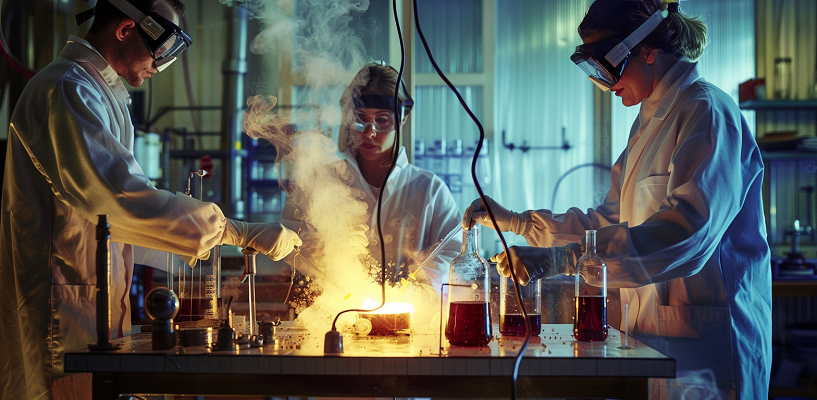Sodium ion

| Sodium ion | |
|---|---|
| Symbol | Na+ |
| Molecular Formula | Na+ |
| Element Name | Sodium. |
| Synonyms | Na+, Sodium (1+), Sodium cation. |
| Charge | +1 |
| Molecular Weight | 22.9897693 g/mol |
| Exact Mass | 22.98976928 g/mol |
| Melting Point | 97.82 °C |
| State | Solid. |
| pKa (Strongest Acidic) | 3.09 |
| Table information obtained from “pubchem.ncbi.nlm.nih.gov/compound/Sodium-Cation”. | |
Ions come in two varieties: cations (+) and anions (-).
“““Sodium ion plays a cofactor role. For an enzyme to function as a “catalyst” (a material that quickens a chemical reaction) — it needs a cofactor, which is a metallic ion.
An enzyme present in the membrane of every animal cell is called the “sodium-potassium pump, or sodium-potassium adenosine triphosphatase, or Na+/K+-ATPase”. “Na+/K+-ATPase” pumps potassium ions into the cell and sodium ions out of the cell against their respective concentration gradients using the energy from ATP hydrolysis. Maintaining cell potential, neuronal impulse transmission, nutrition transport systems, and general cellular homeostasis all depend on this pumping process””” — as stated at “en.wikipedia.org/wiki/Sodium%E2%80%93potassium_pump”.
“““Without the help of a transporter and “suitable driving force”, inorganic ions cannot penetrate lipid bilayers. The most common positively charged ion (cation) outside the cell is “sodium ion” Na+, while the most common one within is K+. The amount of positive charge inside a cell must be countered by an almost exact equal amount of negative charge in order for the cell to resist being torn away by electrical forces. This also applies to the charge in the fluid around the cell. While numerous negatively charged organic ions (anions), such as “proteins, nucleic acids, and several cell metabolites”, electrically balance the high concentration of K+ inside the cell, the high quantity of Na+ outside is mostly balanced by extracellular Cl-. Transmission of electrical signals between excitable cells, such as neurons, depends on the resting membrane potential of the cell””” — according to information found in the book “Alberts, B; Hopkin, …. Essential Cell Biology (5th ed.)”.
“Sodium ion” refers to an alkali metal cation. Group 1 of the periodic table comprises alkali metals like “sodium, potassium, lithium, rubidium, cesium, and francium”.
“Sodium ion” refers to a monoatomic monocation. The phrase “monoatomic” refers to a single atom. A cation created when one electron is lost from a neutral species is called a monocation.
“Sodium ion” Electron Configuration -
The electron configuration of “sodium ion” is 1s2 2s2 2p6, formed when one electron is lost from “sodium”. A neutral sodium atom (Na) has the following electron configuration: 1s2 2s2 2p6 3s1.
The atomic number of sodium (Na) is 11. It consists of 2 electrons in shell 1, 8 electrons in shell 2, and 1 electron in “shell 3” (outermost shell, valence shell). The region in which electrons travel is called the electron shell. Outside of an atom’s nucleus, shells are present. An atom that loses its electrons is referred to as a “positive ion, ion or cation”.
“Sodium ion” Chloride -
An electron is transferred from a sodium atom to a chlorine atom. Thus, an electron was lost by the sodium to become a positive “sodium ion” (Na+) and an electron was obtained by the chlorine to become a negative “chlorine ion” (Cl-). After that, electrostatic forces cause the Na+ and Cl- ions to join, forming the neutrally charged sodium chloride (NaCl) molecule.
A compound created through ionic bonding is known as an ionic compound. Electron transfer, in which one atom transfers electrons to another, is the mechanism by which ionic bonds are formed. An atom that gets electron(s) changes into a negatively charged ion (anion), whereas an atom that loses electron(s) changes into a positively charged ion (cation).
Electrostatic forces hold the ions together as a result of their opposite charges. Ionic bonds are formed when atoms with opposing charges cancel each other charge effect to create neutral molecules.
Many salts, including NaCl, are extremely soluble in water due to the favorable interaction between ions and polar water molecules. NaCl breaks down into separate ions (like Na+ and Cl-), each encircled by a collection of water molecules. Ionic bonds are 10–100 times weaker in aqueous solution than covalent ones.
“Sodium ion” Use -
“Sodium ion” is used in many different organic reductions, perfume production, and the manufacturing of colors and dye intermediates. For example, reducing agents such as “sodium borohydride” (NaBH4) are frequently utilized in chemical synthesis.
“Sodium ion” is utilized in the production of various substances, including baking soda (NaHCO3), caustic soda (NaOH), soda ash (Na2CO3), table salt (NaCl), sodium nitrate (NaNO3), tri- and di-sodium phosphates (Na2HPO4 and Na3PO4), sodium thiosulfate (Na2S2O3.5H2O), and borax (Na2B4O7.10H2O).
For de-icing pathways and roads, sodium chloride (or NaCl) is utilized. NaCl is also frequently used in the “chlor-alkali process” (which produces chemicals), as a bulking agent in powdered soaps and detergents, to flavor and preserve food goods, and to maintain electrolyte balance in medical environments.
As a flux, sodium oxide (Na2O), a “sodium ion” compound, lowers the melting point of silica and increases the flexibility of soda-lime glass throughout the manufacturing process.
Sodium hypochlorite, a “sodium ion” substance, is used in a number of water treatment procedures.
The production of sodium cyanide (NaCN) and sodium peroxide (Na.2O2) depends significantly on “sodium ion”. Tetraethyl lead (TEL) is a petrol additive that was made using a sizable amount of “sodium ion”. The main purpose of adding “tetraethyl lead” to petrol was to raise its octane rating, which improved engine performance and helped avoid engine knocking.
“Sodium ion” is employed in the polymerization of unsaturated hydrocarbons as well as the cleansing of hydrocarbons.
“Sodium ion” is employed in organic reactions “as a cheaper alternative to costly reagents” or “to regulate, speed up, lower temperature, boost yield, and reduce side products of the reaction”.
Alkali metals compounds emit distinctively colored light when they are agitated/heated — that is, when they are exposed to a flame or voltage — thermal decomposition. E.g., 2NaCl(s) → 2Na(s) + Cl2(g). “Sodium ions” are converted to sodium metal atoms when chemicals containing sodium are utilized. These atoms accumulate energy as a result of continued exposure, and jump to an “excited state” (unstable state). When these atoms’ electrons go back to their “ground state”, they release 589 nm-wavelength yellow light — known as a “sodium vapor lamp”.
Alcohols and “sodium ions” combine to generate substances known as sodium alkoxides. When producing biodiesel by trans-esterification processes, sodium methoxide (CH3ONa) is frequently employed as a catalyst. It acts as a potent base catalyst, making it easier for triglycerides to change into methyl esters.
“Sodium ion” Battery -
During charging, large numbers of “sodium ion” (Na+) are taken out of the positive electrode and incorporated into the negative electrode via the electrolyte/separator. To keep the charge balance at “negative electrode”, electrons are provided via the external power source. When the battery is being charged, its positive electrode is linked to the positive terminal of an external power source, like a power supply or charger.
Conversely, during discharge, large numbers of “sodium ion” (Na+) are transferred via an electrolyte from the negative electrode to the positive electrode. As the “sodium ions” leave the “negative electrode”, they push electrons across the “external circuit”/“discharging circuit”, which powers the connected device.
The “sodium ion battery” (SIB) can discharge to zero volts since it lacks over-discharge characteristics. SIBs have an energy density higher than 100 Wh/kg, making them equivalent to lithium iron phosphate batteries — as stated at “iopscience.iop.org/article/10.1088/1742-6596/2109/1/012004/pdf” under the heading “Sodium-ion battery technology: …”.
A sodium nickel-manganese-iron (NMF) oxide with a layered structure for effective “sodium ion” insertion and extraction has been recently identified (in 2023) as a “positive electrode” material. The “positive electrode” of Northvolt batteries is based on Prussian White and is devoid of lithium, nickel, cobalt, and graphite. Because expensive and essential materials like “Co, Ni, and Cu” are absent from SIBs, there are benefits in terms of material costs and CO2 footprint.
In SIBs, “hard carbon, graphite, sodium titanates, sodium vanadates, etc.” can be used as the “negative electrode” material. Sodium salts, alkyl carbonates, solid electrolytes based on sodium, etc. are a few examples of electrolyte materials frequently utilized in “sodium ion” batteries.
SIBs are able to continue charging in below freezing temperatures. Furthermore, because “sodium-ion” electrolytes have a greater flash point, the risk of a fire is further decreased because they are less likely to ignite.
Note: Because “sodium” metal and “sodium ions” are both extremely reactive materials, precautions/care must be taken in accordance with government regulations while handling/operating them in industrial or laboratory environments.
That’s all friends.

